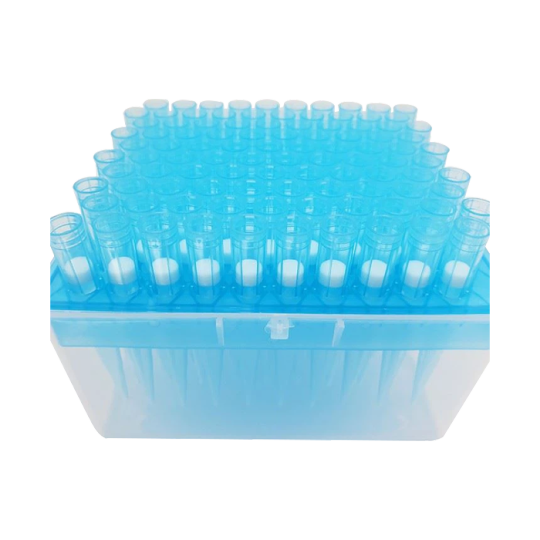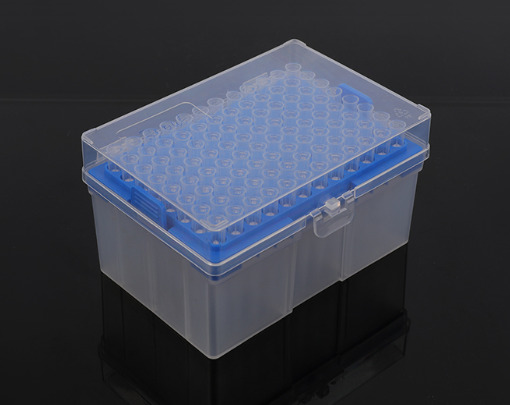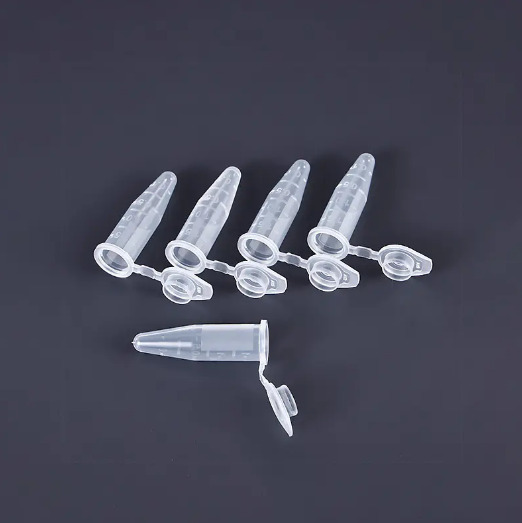#pipette tips
Explore tagged Tumblr posts
Text
#lab equipment#pipette tips#screw cap tubes#microcentrifuge tubes#oem manufacturing#centrifuge tube#micropipettes
0 notes
Text
Recycling Initiatives for 1250μL Pipette Tips
The use of 1250μL pipette tips is ubiquitous in laboratories around the world, serving as essential tools for precise liquid handling. However, the environmental impact of single-use 1250μL pipette tips is a growing concern, as millions of these plastic items are discarded each year. Addressing this issue requires a multifaceted approach that includes proper disposal methods, recycling initiatives, and the exploration of alternative materials.
One of the primary challenges with pipette tips is that they are often made from non-biodegradable plastics, which can take hundreds of years to decompose in landfills. To mitigate this impact, laboratories should implement strict protocols for the disposal of these pipette tips. Instead of throwing them in regular trash bins, labs can establish designated waste containers specifically for plastic waste. This separation not only helps in managing waste more effectively but also facilitates recycling efforts.
Recycling them is a viable option that many laboratories are beginning to explore. Some manufacturers have initiated programs that allow users to return used pipette tips for recycling. These programs often involve collecting the tips and sending them back to the manufacturer, where they can be processed and repurposed into new products. By participating in such initiatives, laboratories can significantly reduce the number of 1250μL pipette tips that end up in landfills.

1 note
·
View note
Text
300ul Racked Filter Micro Pipette Tips
300ul rack-mounted filtered micropipette tips are precision tools designed for laboratory micro-liquid manipulation. The suction head is uniquely designed and has an efficient filtration function, which can effectively remove impurities and particles in the liquid, ensuring the accuracy and reliability of experimental results.

Contact Us Phone: +86-571-86722161 E-mail: [email protected]
0 notes
Text
16 strict quality control measures ensuring precision pipetting performance in pipette tip production.
At Cotaus, we understand that the accuracy and reliability of laboratory results depend on the precision of every tool used. That’s why our pipette tips are produced under the strictest quality control standards, ensuring they meet the highest performance benchmarks for accurate pipetting. From the selection of materials to the final inspection, every step of the production process is carefully monitored to guarantee consistency, durability, and precision. Let's see How we do.
1. Tips' volume accuracy and precision
Cotaus each batch of pipette tips undergoes volume calibration to ensure they fall within the standard tolerance range. Random samples are taken from each batch and multiple liquid aspirates and dispenses are performed to check the consistency of the tip’s volume accuracy and precision.
2. Tips' dimensional consistency
Random samples are taken from each batch to test the tip’s dimensions to ensure they conform to standard specifications(Uniformity of product dimension≤0.15), ensuring consistent inner and outer diameters, length and shape to prevent fit issues.
3. Tips' physical integrity
The tips are checked for cracks, air bubbles, or any physical defects that might affect their pipetting performance or lead to contamination.
Pressure and bend tested to ensure they can withstand normal operating pressure and bending without breaking or deforming.
4. Tips' airtight seal and fit
Verifying that the pipette tips fit securely onto pipettes or automatic liquid handling platform, ensuring no air leakage during aspiration or dispensing. Ensure the tips are compatible with various pipette brands and robotic liquid handling systems, ensuring no loosening, slipping, or improper fit.
5. Tips' concentricity
Using precision instruments such as laser scanners or coordinate measuring machines (CMM), to check the roundness of both the inner and outer diameters. Cotaus pipette tips require concentricity errors within ±0.2 mm.
6. Tips' perpendicularity
Using specialized perpendicularity testing instruments to check the angle between the tip's bottom surface and its central axis. The error is typically required within a tolerance of 0.5 millimeters or less.
7. Tips' liquid retention and low-residue testing
Special surface treatments are applied to ensure the inner surface of the tip is smooth and reduces liquid retention, especially when handling viscous liquids. Measurement of liquid residue left in the tip after aspiration and dispensing, particularly when handling small volumes, to ensure minimal liquid carryover.
8. Tips' retention force
Measuring the force required to attach and detach the pipette tips, ensuring they are neither too tight (difficult to remove) nor too loose (which could cause aspiration issues).
9. Tips' surface smoothness
Ensures that both the inside and outside surfaces of the tips are smooth, with no irregularities or roughness, testing for smooth internal and external surfaces to minimize sample retention, avoid contamination, and enhance the efficiency of liquid transfer.
10. Tips' sterility
Ensures that sterile tips are sealed properly during packaging to prevent contamination. Cotaus disposable tips utilize electron beam sterilization which is a safe and efficient method that leaves no chemical residue.
11. Tips' resistance and CV values
Resistance testing ensures the durability and performance of the pipette tip under different physical and chemical conditions. CV testing evaluates the precision of liquid transfer by measuring the consistency of the tip’s performance, ensuring high accuracy and low variability.
12. Tips' material durability
Adopt imported medical-grade polypropylene (PP) materials to ensure the dimensional stability of the tips, Cotaus ensures consistency in the material used to avoid discrepancies in dimensions or performance that could affect pipette accuracy.
13. Tips' manufacture equipment
Cotaus owns 120+ automated manufacturing assembly lines, using high-precision injection molding machines to ensure dimensional consistency and accuracy of the tips, improving efficiency and reducing human error.
Cotaus owns a mold manufacturing company that produces high-precision molds for pipette tip production, ensuring accurate shape, size, concentricity, and perpendicularity.
Quality control equipment including precision balances and measuring devices, laser measurement instruments, automated inspection systems, etc.
14. Tips' production environment
Manufactured in a 100000-class dust-free workshop to avoid contamination from dust, particles, or contaminants.
15. Tips' QC Standards
Ensures the tips comply with quality standards (ISO13485, CE, FDA), guaranteeing their performance, precision, and reliability.
16. Tips' production process management
ERP Systems manage raw materials, production scheduling, inventory, and shipping, ensuring a smooth and timely production process. Critical production parameters and quality inspection data are recorded and stored during production, providing traceability for each batch of tips and facilitating post-production quality tracking.
0 notes
Text
Liquid Handling in Drug Discovery: Enhancing Precision and Throughput
Liquid handling is a critical process in drug discovery, involving the accurate and efficient transfer of liquids between containers. The precision and throughput of liquid handling operations can significantly impact the success of drug discovery research. In this blog post, we will explore the importance of precision liquid handling in drug discovery and discuss some of the key technologies and techniques that are used to enhance precision and throughput.
The Importance of Liquid Handling in Drug Discovery
Liquid handling is a fundamental aspect of drug discovery research, with applications ranging from compound screening and formulation to analysis and quality control. Accurate and precise liquid handling is essential for:
Ensuring data reliability: Inconsistent liquid handling can lead to errors in experimental data, compromising the validity of research findings.
Improving efficiency: Efficient liquid handling techniques can accelerate the drug discovery process and reduce costs.
Enhancing reproducibility: Consistent liquid handling practices are crucial for ensuring reproducibility of experimental results.
Liquid Handling Technologies
A variety of liquid handling systems are available to researchers, each with its own advantages and limitations. Some of the most commonly used technologies include:
Manual pipettes: While still widely used, manual pipettes can be time-consuming and prone to human error.
Electronic pipettes: Automated pipetting systems offer improved accuracy and precision compared to manual pipettes, as well as features such as adjustable pipetting speeds and programmable protocols.
Liquid handling workstations: Automated liquid handling workstations can significantly increase throughput and reduce the risk of human error. These systems can be programmed to perform complex liquid handling tasks, such as serial dilutions, transfers, and aliquoting.
Techniques for Enhancing Precision and Throughput
In addition to selecting the appropriate liquid handling technology, researchers can also employ a number of techniques to enhance precision and throughput:
Tip calibration: Regular calibration of pipette tips is essential for ensuring accurate liquid handling.
Liquid handling robotics: Automated liquid handling robots can be used to perform repetitive tasks with high precision and speed.
Miniaturization: Reducing the volume of liquid handled can improve efficiency and reduce costs.
Microfluidics: Microfluidic devices can enable high-throughput liquid handling with minimal sample volumes.
Conclusion
Liquid handling is a critical process in drug discovery that requires precision, accuracy, and efficiency. By selecting the appropriate technologies and techniques, researchers can enhance the quality and speed of their work, ultimately accelerating the development of new drugs.
#precision liquid handling#liquid handling#liquid handling systems#Automated pipetting systems#pipette tips#pipettes#micropipette#pipette filler
0 notes
Text
Optimize Your Lab with Microlit's Precision Pipette and Filter Tip Box
Experience unparalleled precision with Microlit's Low Retention Pipette and Filter Pipettor Tip Box, designed for minimal sample loss and contamination prevention. This user-friendly, cost-effective solution is ideal for teaching labs, ensuring time and resource savings. Praised by experts like Elly York for its efficiency, Microlit enhances your lab's performance. Get yours today and transform your liquid handling tasks!
See more https://www.microlit.us/product-category/micropipette-tips/
0 notes
Text
Universal Pipette Tips In Laboratory Applications
The choice of pipette tips is a critical consideration that directly influences the accuracy, precision, and reliability of liquid handling processes. Among the various options available, Filter Pipette Tips and Universal Pipette Tips have gained prominence for their distinct advantages in addressing specific challenges associated with pipetting.
Filter Pipette Tips are equipped with a barrier, often made of hydrophobic material, situated at the end of the tip. This design offers several advantages, making Filter Pipette Tips particularly advantageous in applications where contamination prevention is paramount.
Aerosol Containment:
The primary benefit of Filter Pipette Tips lies in their ability to prevent the aerosolization of liquids during pipetting. The hydrophobic filter acts as a barrier, trapping any liquid that may be drawn into the pipette tip during aspiration. This is particularly crucial when working with biohazardous or volatile substances, minimizing the risk of sample contamination and exposure.
Reduced Cross-Contamination:
Filter Pipette Tips contribute to the aseptic technique by reducing the risk of cross-contamination between samples. The hydrophobic filter prevents liquids from reaching the pipette shaft, ensuring that only the intended sample is aspirated. This is essential in applications such as PCR, where even trace amounts of contamination can impact the reliability of results.

0 notes
Text
“I hope she plays Hot to Go!”
“This is the lab bench…”

13 notes
·
View notes
Text
started listening to the audiobook for bad blood by john carreyrou. its a nonfiction account of the theranos and its absolutely fucking WILD. especially as a lab tech. horrifying all the way through
#howling#listenerposting#like holyyyyy shit#still not over the gluebot bit. they put a pipette tip on a glue dispenser and called it the eddison
4 notes
·
View notes
Text
Why Overhead Stirrers Are a Must-Have in Modern Labs?

What is an Overhead Stirrer ?
An overhead stirrer is a high-precision tool that labs use to mix, homogenize, suspend, and recirculate thick materials or large amounts of liquid. While magnetic stirrers work well for thin liquids and small-scale jobs overhead stirrers are more effective for thicker samples or when magnetic stirring doesn't do the trick.
These devices offer steady powerful stirring and let scientists observe and adjust reactions even as the viscosity changes during the process. This makes them essential for advanced research and industrial applications.
Neuation Overhead stirrer by Accumax deliver consistent, high-torque performance, making them a reliable choice for demanding lab tasks. These tools enable researchers to observe and manage reactions well—even when viscosity shifts during the process—making them essential for advanced research and industrial applications.
Key factors to consider before choosing an Overhead Stirrer
While choosing a suitable overhead stirrer make sure your lab mixing is efficient, steady, and doesn't cause any accidents. This is important when you're dealing with complex or high-viscosity samples. To make well informed decision, remember these couple of crucial factors
1. Viscosity Handling
The viscosity of a liquid refers to its thickness, or the resistance it faces when flowing. You require greater power from your overhead stirrer to blend a denser substance. It's essential to choose a stirrer that maintains the same speed, regardless of whether the mixture becomes thicker or thinner during the process. You need to determine whether the substances you combine resemble water and are somewhat viscous or truly thick. To achieve optimal results, you should choose a stirrer capable of mixing the thickest substances you may encounter. Stirrers made to handle approximately 10,000 mPas, 30,000 mPas, and 50,000 mPas are excellent for various laboratory activities.
2. Stirring Speed
Overhead stirrers are available with various speed options—some feature fixed speeds, while others allow for a variable adjustment range. Depending on your use case, you might require rapid mixing or gentle, measured stirring.
Seek out stirrers featuring digital speed indicators for enhanced precision and consistent outcomes.
3. Volume Capacity
Your stirrer ought to manage the largest batch volume you usually operate with. Whether you’re preparing 2 liters or increasing to 75 liters, choosing an overhead stirrer with the appropriate volume capacity is crucial for both efficiency and durability.
Accumax Overhead Stirrers are crafted to fulfill diverse laboratory requirements, providing optimal volume capacities of 25L, 40L, and 75L. Featuring strong performance and dependable mixing for various viscosities, Accumax guarantees uniform results, batch after batch.
4. Torque Power
Torque is the force that keeps the stirrer rotating, even when the mixture becomes thick or resistant. Higher torque ensures reliable mixing, especially for dense or high-viscosity samples.
For efficient and stable operation across various lab applications, the ideal torque capacities for overhead stirrers are 20 Ncm , 40Ncm and 75 Ncm
5. Interface and Control Options
Designed for precision and safety, some overhead stirrers offer reversible mixing (CW/CCW), smart control for uninterrupted operation, and automatic shut-offs for overload, current, and temperature. A large digital display ensures real-time monitoring, while the push-through shaft makes working with viscous samples effortless—perfect for advanced lab workflows.
6. Accessories and Additional Features
Modern overhead stirrers offer a variety of features and optional accessories to enhance functionality:
Reversible rotation
Automatic shutdown
Programmable mixing cycles
LED lighting or integrated timers
Digital torque/speed displays
Top Picks for Reliable Overhead Mixing Solutions
With 20+ years of experience in delivering precision-engineered benchtop equipment, Accumax brings you a stirring solution you can trust. Designed for labs that demand both performance and reliability, the iSTIR OH PRIME and iSTIR OH 75 ELITE are more than just overhead stirrers—they’re your dependable lab partners.
iSTIR OH PRIME
Engineered for day-to-day excellence, this compact powerhouse features a brushless DC motor for quiet, maintenance-free operation and a microprocessor-controlled system that ensures consistent performance across a wide range of viscosities and volumes—up to 30,000 mPas and 40L.
Key Features:
Speed range: 50–2000 RPM
Timer: 1 min to 999 hrs 59 min + continuous mode
Reversible mixing motion (CW/CCW)
Smart control for uninterrupted mixing
Safety shut-offs for overload, current, and temperature
Large digital display for real-time monitoring
Push-through shaft for ease with viscous liquids
CE certified
iSTIR OH 75 ELITEBuilt for high-demand applications, the ELITE model offers enhanced performance with the capacity to stir up to 100L and handle viscosities of up to 70,000 mPas. It carries forward all the advanced features of the PRIME, plus added strength and durability for intensive tasks.
Key Features:
Speed range: 60–2000 RPM
Timer: 1 min to 999 hrs 59 min + continuous mode
Reversible mixing motion (CW/CCW)
Smart control for uninterrupted mixing
Safety shut-offs for overload, current, and temperature
Large digital display for real-time monitoring
Push-through shaft for ease with viscous liquids
CE certified
Blog Source -- Why Overhead Stirrers Are a Must-Have in Modern Labs?
#lab equipment#pipette tips#screw cap tubes#microcentrifuge tubes#centrifuge tube#micropipettes#oem manufacturing#micropipette tips#sustainable labware
0 notes
Text
everytime i set up a qpcr plate im faced with the question of if i can count to six and then eight. then i am forced to face the fact that no. i can't.
#fills a well twice and then skips a well and doesn't notice until the pipette tip numbers don't match at the end of the row#lee.txt
3 notes
·
View notes
Text

Cotaus Robotic Pipette Tips Compatible with the following robotic systems: Agilent, Tecan, Hamilton, Beckman, Xantus, Apricot Designs.
Features:
Made of high quality polypropylene(PP)
Color: black(Conductive), clear
Sterile or non-sterile
Filtered or non-filtered
Standard or extended length
DNase/RNase free, Pyrogen free, Bioburden free, PCR inhibitor free, or endotoxin free
Low CV Accuracy, strong hydrophobicity, no liquid adhesion
0 notes
Text
In the realm of laboratory equipment, even the smallest components can significantly impact experimental outcomes. One such crucial component is the pipette tip. Often overlooked, the type of pipette tip used can influence the accuracy, precision and integrity of experimental results. Among the choices available, two main types stand out: Ordinary and Filtered pipette tips. Understanding their differences and when to use each is essential for any researcher striving for reliable and reproducible data.
#micropipettes#liquid handling#pipettes#micropipette price#liquid handling instrument#pipette filler#bottle top dispenser#pipette tip#pipette tips
0 notes
Text
Optimize Your Lab with Microlit's Precision Pipette and Filter Tip Box
Experience unparalleled precision with Microlit's Low Retention Pipette and Filter Pipettor Tip Box, designed for minimal sample loss and contamination prevention. This user-friendly, cost-effective solution is ideal for teaching labs, ensuring time and resource savings. Praised by experts like Elly York for its efficiency, Microlit enhances your lab's performance. Get yours today and transform your liquid handling tasks!
See more https://www.microlit.us/product-category/micropipette-tips/
0 notes
Text
tomorrow i'm working with a new research group for the first time, i am vibrating with anxiety
#i don't know any of these people#i don't know the customs in their lab#and it's a lab that has MONEY they probably don't even reuse pipette tips#a talks#phd
4 notes
·
View notes